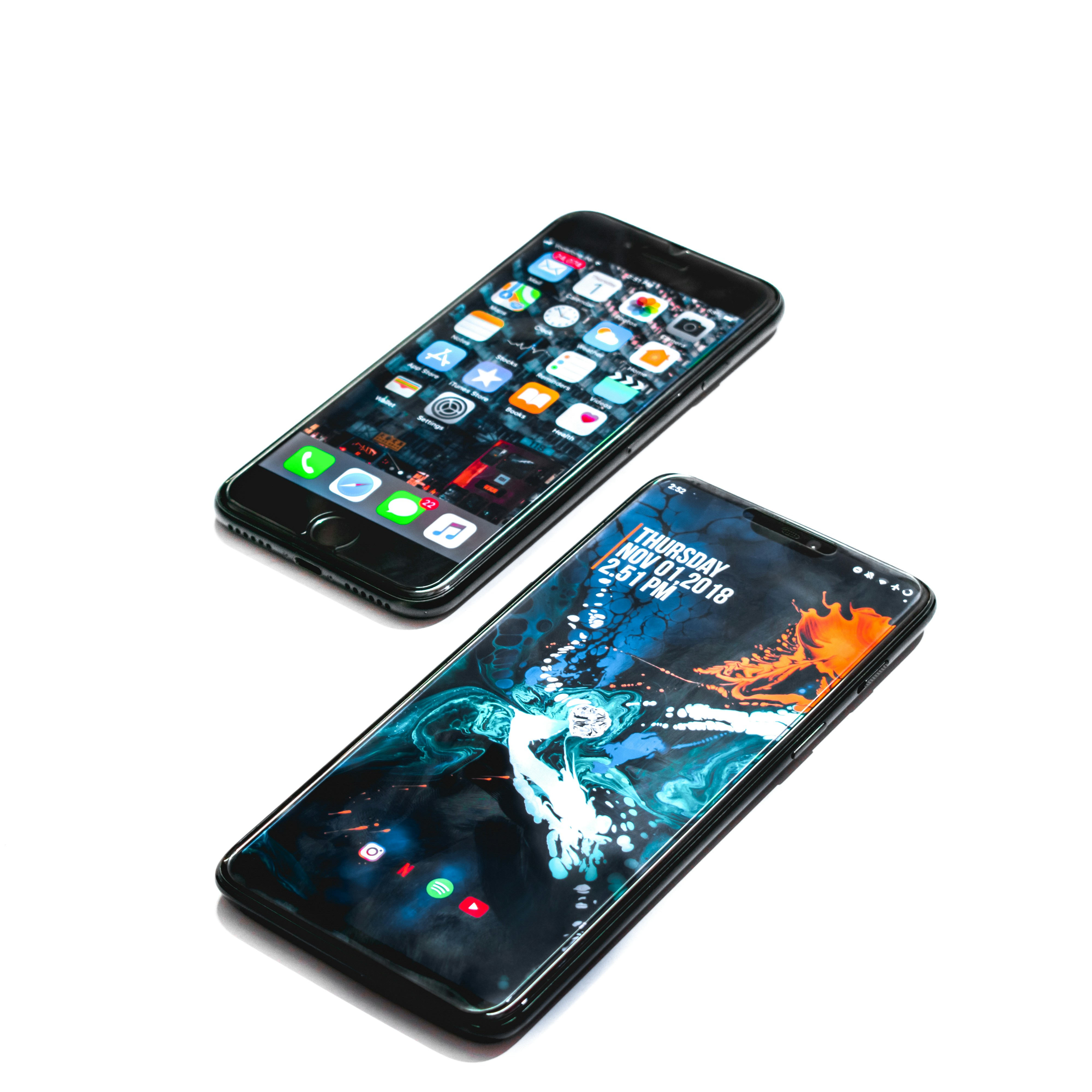Cross-Platform App Development for Startups: Is It the Right Fit for Your App?
What if you could build a single app for multiple platforms and cut down your development time and costs all at once? That’s the allure of...
8 min read
Written by Dan Gower, Sep 1, 2023

If you’ve ever used apps like eBay, iRobot, and Google Pay on your iPhone or Android device, then you’ve experienced Flutter application development. The open-source software development kit (SDK) powers the UI for some of the most recognizable apps in the world.
Flutter has certainly earned its place in the app development process. It’s a vital part of the toolkit for many of the best business application development teams. If you’re thinking of using Flutter to design and build the user interface of your own app, you’ve come to the right place.
In this guide, we’ll look closer at the Flutter framework, the pros and cons of Flutter app development, and some examples of the top Flutter apps. Revisiting the basics might help you decide if this cross-platform language is right for your next digital product.
Flutter is an open-source user interface SDK created by Google in 2017. Flutter’s primary purpose is to develop applications for mobile, web, and desktop using a single open-source code base. It’s agile. It’s built for speed, simplicity, and performance.
These characteristics make it a favorite among app developers. Cross-platform application development teams also tend to love Flutter for its dual Android and iOS performance. It’s a fan favorite among those who appreciate reliable and responsive frameworks.
Google’s SDK is useful for Android, iOS, Linux, Mac, Windows, Google Fuchsia, and the web. The Dart programming language, also developed by Google, is the native tongue of Flutter app development. This single language can be deployed across multiple platforms, which makes Flutter application development extremely versatile.
Flutter offers a ‘hot reload’ feature which is a significant advantage for developers as it allows them to see the effects of their changes in real time without restarting the application. This feature can significantly speed up the development process.
Moreover, Flutter provides a wide range of pre-designed widgets that adhere to specific design languages like Material Design and Cupertino.
Flutter’s open-source software development kit for UI comprises three architectural layers. These layers include the following, which work together in harmony to create the end product:
Learn more: 11 Best Mobile App Programming Languages (Pros & Cons)
Here’s a simplified explanation of how Flutter works:
In Flutter, the user interface is built out of widgets, which are the basic building blocks of a Flutter app’s user interface. Widgets can represent anything from a single button or a text box to complex layout structures. These widgets can be nested inside each other to create complex user interfaces.
Learn more: 5 Most Important UI Design Elements
When developing apps with Flutter, the language of choice is Dart. Dart’s standout feature is its ability to do away with the need for an additional declarative layout language, like JSX or XML, or a visual interface builder. This is because Dart provides a straightforward and easily visualized programmatic layout.
Flutter has its own rendering engine, built using C/C++, which is capable of fast performance. This engine paints the UI to a canvas and can also play animations by communicating with the platform without going through a JavaScript bridge like other cross-platform frameworks have to.
One of Flutter’s major features is a feature known as “Hot Reload,” which allows developers to see changes made in the code on emulators, simulators, and hardware almost instantly without losing the current application state.
Flutter applications have exceptional performance due to their ahead-of-time (AOT) compilation. This process compiles them to native code, resulting in faster app startup times and improved overall performance. Additionally, developers can use just-in-time (JIT) compilation in Dart for lightning-fast development cycles and a game-changing workflow, including Flutter’s hot-reload feature.
By using Flutter, developers can have complete control over every pixel on the screen and can overlay and animate graphics, text, video, and controls without limitation. This leads to highly customizable and visually appealing apps.
Flutter boosts several benefits for mobile app developers, including the following:
Because Flutter utilizes Dart, which is compiled into native code, there’s no need for a JavaSript Bridge. As a result, Flutter application development yields fast, agile, and responsive apps.
Because Flutter is open source, it’s constantly improving thanks to the large community of users adding to its knowledge base daily. This also means that it boosts an extensive database of resources for FAQs and tutorials.
One of Flutter’s best perks is that it doesn’t charge licensing fees. Since it’s open source, it also means the price point is enticing for startups or businesses working with a low or shoestring budget.
Rather than developing apps for both Android and iOS, Flutter makes it possible to create one app that can be utilized across multiple platforms. This typically saves time, effort, and money for the mobile development process. And what’s even better is that Flutter can also be used to create web applications too.
Learn more: Cross-Platform vs. Native App Development
Flutter is a Google product, meaning that the tech behemoth also provides copious support to the program. Google is constantly working to support and improve Flutter, so users can rest easy knowing that the company will almost certainly back the product into the immediate future.
Because the Dart programming language has several tools to discover and resolve bugs, it’s easy to solve problems as they arise with tools like the Dart Analyzer and the DevTools Suite.
If Flutter had a love language, it would most definitely be widgets. Widgets are the primary building block of Flutter-based apps, meaning that almost every object within the Flutter framework is a widget. Buttons, padding, fonts – if you can name it, it’s probably a widget. Widgets in Flutter are highly customizable, making creating a beautiful user interface seamless and easy to do.
Luckily for developers new to Flutter, the Dart programming language has a simple learning curve. Even people with limited software development knowledge may be able to build and create apps using Flutter.
Learn more: How to Find a Developer Who’s an Ideal Fit For Your Project
While Flutter offers many advantages, like any technology, it has limitations. Some of the potential downsides of Flutter application development include the following:
While Flutter is still growing rapidly, it lacks some of the libraries and support that more mature platforms and third-party apps offer. If you need specific functionality for your app, it’s entirely possible that Flutter won’t have a viable solution.
Apps developed using Flutter may have a bigger file size than those created with native technologies, which could pose a challenge in areas where users have restricted device storage or slow internet connectivity.
Some complex system-level features specific to iOS or Android may not be supported or may require considerable workarounds in Flutter. Tooling is also far less robust than other platforms, like Swift or XCode.
As a newer language, Dart (which Flutter is based on) has less community support compared to more established languages like Java or Kotlin for Android or Swift for iOS.
While Flutter’s performance is generally quite good, it can’t quite match the performance of a truly native app. Specifically, Flutter apps might not have easy access to native features on the phone. For example, a Flutter mobile application might not be the best bet if your app needs to use the phone’s camera.
Although Google backs Flutter, some companies might hesitate to adopt it, questioning its long-term viability. Google has a track record of discontinuing less successful projects, and while Flutter is doing well right now, it’s something to consider. As long as Flutter application development is the go-to option for many cross-platform product teams, Google has plenty of reasons to keep up the good work.
Flutter has been used by a variety of companies, from startups to established enterprises, to build beautiful and performant mobile apps. A few of the most notable examples include:
This is Google’s own mobile advertising platform where you can view campaign stats, update bids and budgets, or get real-time alerts and notifications. One thing people worry about with Flutter is that Google might stop supporting it if it becomes less popular. This risk doesn’t seem so scary when you remember that Google is using Flutter itself to support its money-printing ad platform.
eBay has been a favored platform for car enthusiasts to buy and sell rare automobiles for several years. However, it wasn’t until 2018 that the eBay Motors team was assigned to create a new app for Android and iOS solely for this purpose.
A successful app required a comprehensive set of features. It also had to match the appearance of the main eBay app. To add yet another layer to the challenge, the app had to go live within a year.
Because Flutter offered both Android and iOS capabilities, eBay Motors chose to utilize the platform for their app. They were able to code once and deploy everywhere, ultimately meeting their tight deadline.
The international trade arm of the world’s biggest e-commerce platform uses Flutter to power parts of its app. The Alibaba team realized they needed to improve their user experience by developing an app that could provide feature-rich graphics and load quickly across multiple platforms. That’s when they turned to Flutter.
Millions of people worldwide use Google Pay to manage expenses, payments, and savings. Rapid expansion to 1.7 million lines across both Android and iOS systems demanded a vast amount of code. Additionally, with this expansion, new countries required unique features, which made it more challenging to develop for both Android and iOS.
To address these challenges, Google Pay invested in Flutter to enable them to do more with less code. This simultaneously helped them avoid hiring more iOS engineers.
iRobot, well-known for Roomba Robot Vacuums, wanted to offer programmable robots that would help teach coding skills in a fun and interactive way. The iRobot Education division developed the iRobot Coding App, allowing coders to control a virtual robot. Initially, this app was only available for iOS devices since it was developed in Swift.
Eventually, the iRobot Education team decided to make STEM education available to a more diverse audience. They did so by releasing Android and web versions of the app using Flutter.
Flutter is a versatile framework that can be used to develop a wide range of applications. However, it tends to excel in particular scenarios:
Flutter allows developers to maintain a single codebase for both Android and iOS applications. This quality makes it an excellent choice when you need to reach multiple platforms with similar functionality and design.
Flutter provides an extensive selection of customizable widgets that enable developers to design visually appealing and engaging application interfaces. Its adaptability makes it an excellent option for applications where appearance and functionality are essential. With Flutter, developers can effortlessly produce exceptional and expressive UI designs that would be challenging to accomplish with alternative frameworks.
Learn more: How Often Should You Update Your UI
If you’re developing a prototype or a Minimum Viable Product (MVP) for your app, Flutter can help speed up the development process. This is especially true if you want to showcase your app to stakeholders or a potential client on multiple platforms or are in a particularly quick time crunch.
Learn more: Proof of Concept: 5 Steps for Successful Software Development
Flutter’s hot reload capability is advantageous for building real-time applications like instant messaging or live tracking apps where you need to update the UI instantly.
Flutter’s ability to create visually appealing and intuitive user interfaces makes it an excellent choice for eCommerce apps where customer experience and engagement are critical.
Choosing a Flutter software development partner involves a careful evaluation of potential candidates to ensure they meet your project needs and expectations. Start by looking at the partner’s portfolio to understand their past projects and the types of apps they’ve created using Flutter.
Next, consider their technical expertise in Dart programming language and their ability to work with both Android and iOS platforms. Check their reputation through client testimonials or third-party review platforms. Don’t forget to discuss their development process, communication practices, and how they handle project timelines and potential changes in requirements.
Finally, assess whether their pricing model fits within your budget. Remember, the cheapest option isn’t always the best one— quality, reliability, and a proven track record of successful projects are just as important.
Learn more: What is a Dedicated Development Team and When Should You Hire One
In conclusion, Flutter presents a compelling choice for those considering developing a mobile app. It’s versatile, powerful, and capable of delivering beautiful, high-performance apps for multiple platforms from a single codebase.
While it does have certain limitations, its numerous benefits and continued support from Google indicate a bright future for this impressive framework.
If you’re thinking about creating an app and wonder if Flutter is the right choice for you, we invite you to contact the development team at Designli. We’ll couple our expertise in Flutter application development with a dedication to your vision. This is the way we can evaluate your needs and guide you through the process of developing a successful mobile app.
Schedule your evaluation today, and let us help to make your app dream a reality.
You might also like:
Subscribe to our newsletter.

What if you could build a single app for multiple platforms and cut down your development time and costs all at once? That’s the allure of...

You have a great idea for an app, but you need to find a partner to bring it to life and help you think through strategic decisions required for...

Achieving sustainable business growth requires applications that can adapt and scale as demands increase. The solution? Scalability. Scalable apps...
Post
Share